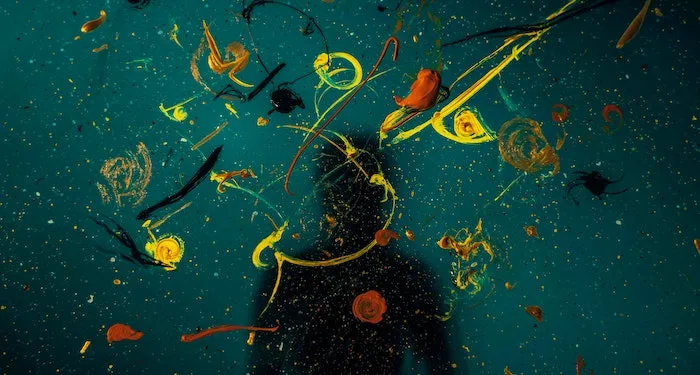
Explore Indigenous Futurisms With these SFF Books by Indigenous Authors
“Indigenous Futurisms” is a term that was term was coined by Dr. Grace Dillon, professor in the Indigenous Nations Studies Program at Portland State University. It’s inspired by Afrofuturisms, a movement that explores speculative fiction through an African diaspora lens. (That is a very, very basic explanation for a huge concept spanning philosophy, history, and literature that I can’t do justice here.) Depictions of Indigenous people in mainstream media has often placed them in a historical context, not recognizing the Indigenous cultures and individuals of today, never mind the future. Indigenous Futurisms imagine Indigenous people into every context: space travel, fantasy worlds, alien invasions, and more.
I am definitely not an expert in Indigenous Futurisms, and I am approaching these books as a white settler reader, but I did want to highlight some speculative fiction titles by and about Indigenous people: some of them I’ve read and loved, some are on my TBR. Most of these are from North America, but I’d love to hear about more Indigenous SFF authors from South America. Feel free to reach out on social media if I’ve missed one of your favorite Indigenous speculative fiction authors!
Anthologies & Short Story Collections
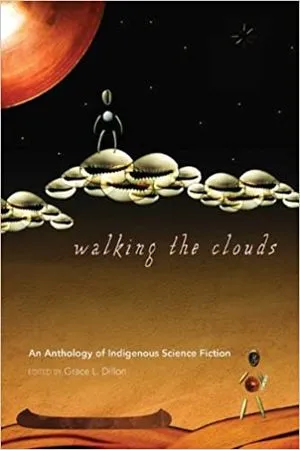
Walking the Clouds: An Anthology of Indigenous Science Fiction Edited by Grace L. Dillon
The first anthology of Indigenous science fiction, this was also where the term Indigenous Futurisms originated! Walking the Clouds includes Native American, First Nations, Aboriginal Australian, and New Zealand Maori authors and is organized by sub-genre, including time travel, Indigenous science, and apocalypses. It includes well-known authors like Leslie Marmon Silko as well as authors that will likely be new to you. It also is a mix of excerpts from novels and standalone short stories. This is a great place to start if you’re interested in reading Indigenous Futurisms!
Grace L. Dillon is an Anishinaabe professor in the Indigenous Nations Studies Program at Portland State University.
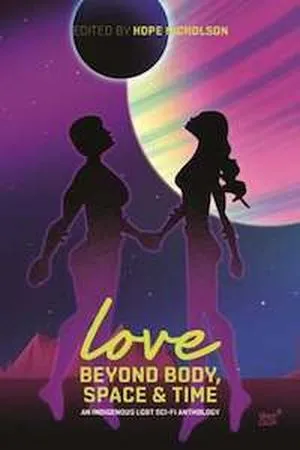
Love Beyond Body, Space, and Time: An Indigenous LGBT Sci-fi Anthology Edited by Hope Nicholson
Anthologies are a great way to get introduced to a bunch of different authors. Love Beyond Body, Space & Time has the bonus of being all Two-Spirit and LGBTQ+ stories. Despite the subtitle, this is a mix of sci-fi and fantasy, and represents many different Indigenous nations. This was my introduction to Darcie Little Badger (you’ll see that name again on this list!), who writes a heartwarming romance about two Indigenous women on a spaceship with puppies! That story alone is worth picking this collection, but they’re all strong.
Hope Nicholson is not Indigenous, but all the contributors are.
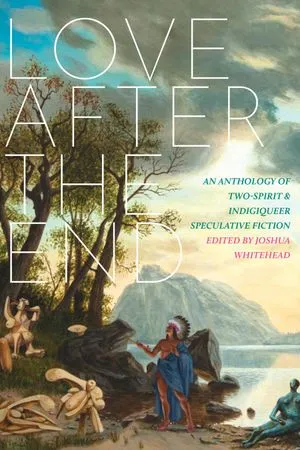
Love After the End: An Anthology of Two-Spirit and Indigiqueer Speculative Fiction Edited by Joshua Whitehead
Love After the End is another collection of Two-Spirit and Indigiqueer speculative fiction stories, but this one has a slightly different tone. Joshua Whitehead’s introduction is thought-provoking and informed by the theory he studies. Love After the End is also focused much more on dystopias, especially the idea of humans evacuating a dying Earth. This is a fascinating read, because space travel is often written from an uncritical colonial perspective. This collection has a very different approach to travel and to leaving Earth. Also there’s a love story between a genius cyborg rat and a human teenager, so there’s that!
Joshua Whitehead is an Oji-Cree, Two-Spirit member of the Peguis First Nation.

Take Us to Your Chief And Other Stories by Drew Hayden Taylor
This has been a popular choice to teach in high schools in my area! Taylor takes sci-fi tropes and uses them to explore how Indigenous people in Canada have been treated at different points in history. He also uses a lot of humor in his stories. If you’re looking for more Indigenous SFF from Taylor, he also has a fantasy series, starting with Kynship, which has Two-Spirit and LGBTQ+ characters.
Drew Hayden Taylor is an Ojibwe author.
Comics
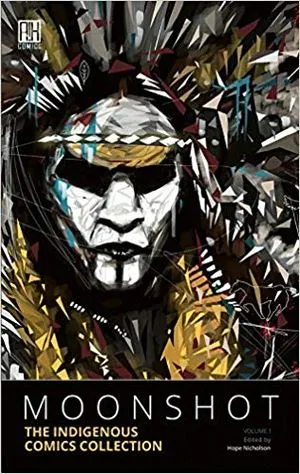
Moonshot: The Indigenous Comics Collection Edited by Hope Nicholson
Moonshot is a three volume collection of comics written and illustrated by Indigenous authors and illustrators across North America. They aren’t entirely SFF, but many of the stories in each collection are, and the first collection in particular looks towards the future. They showcase a lot of different writing and illustration styles, making each story distinct. I taught the space travel comic “Journeys”by Jeffrey Veregge in my first practicum to a high school English class, and it was fascinating to see the different ways that students interpreted the story.
Hope Nicholson is not Indigenous, but all the authors are. Moonshot Vol. 3 is edited by Elizabeth LaPensée (Anishinaabe, Métis, and settler-Irish) and Michael Sheyahshe (Caddo Nation of Oklahoma). Vol. 3 also has all Indigenous illustrators, in addition to all Indigenous authors.
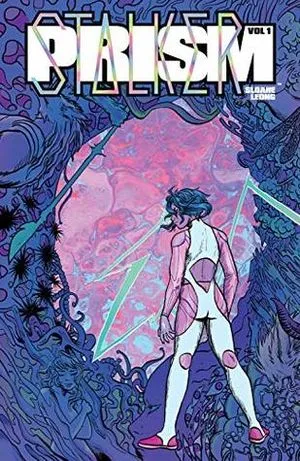
Prism Stalker, Vol. 1 by Sloane Leong
Prism Stalker is a psychedelic, technicolor exploration of colonialism in space. Vep is a refugee, an indentured citizen who finds herself working for a private military to “settle” another planet, which will likely face the same outcome as her destroyed home planet. She faces being subsumed into the Chorus, which would mean finding a home, but losing her selfhood.
Leong is an artist and writer of Hawaiian, Chinese, Italian, Mexican, Native American, and European ancestries.
Poetry
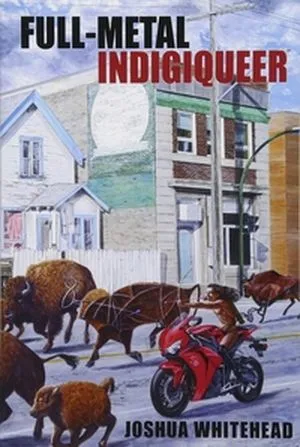
full-metal indigiqueer by Joshua Whitehead
Poetry might not be a genre you associate with speculative fiction, but full-metal indigiqueer makes perfect sense on this list. It focuses on the Indigiqueer Trickster character Zoa, blending technology and the organic. Whitehead is an incredible, thoughtful, and challenging poet/author, and this collection references Chaucer, Dickens, and Shakespeare, as well as Lana Del Rey and Grindr. This is decolonizing cyberpunk experimental poetry you won’t forget.
Joshua Whitehead is an Oji-Cree, Two-Spirit member of the Peguis First Nation.
Find it in the Fiction Section
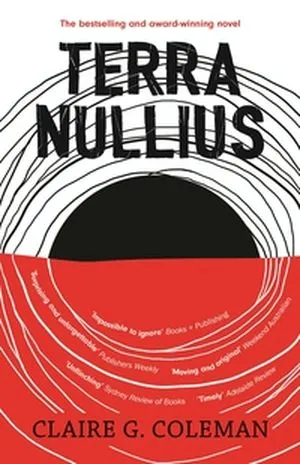
Terra Nullius by Claire G. Coleman
When the British empire invaded what is now Australia, they declared it “terra nullius” or “nobody’s land,” and therefore fair game for claiming—despite it being inhabited. This novel looks at an Australia divided into Settlers and Natives. Native children are taken from their families and re-educated in residential schools to act as labor for the Settlers. We see the situation from multiple perspectives: an enslaved Native man, a woman in a free Native camp, a Settler nun, and a Colonial Trooper. But, as the blurb promises, “This is not Australia as we know it. This is not the Australia of our history.”
Claire G. Coleman is a Wirlomin-Noongar-Australian writer and poet.
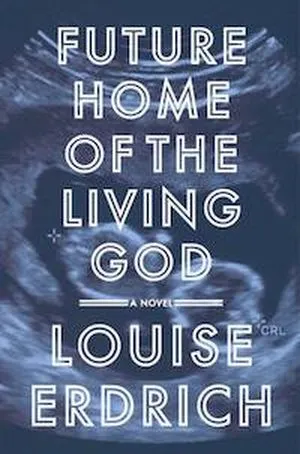
Future Home of the Living God by Louise Erdrich
Louise Erdrich is a well-loved author, but not usually associated with SFF. Future Home of the Living God is a dystopian novel, where evolution appears to be reversing itself. The babies being born seem to be earlier versions of hominids. Cedar Hawk Songmaker is four months pregnant, and in order to deal with the many unknowns in this pregnancy, she decides to try to find her biological mother, an Ojibwe woman living on the reservation. Along the way, the U.S. continues to crumble, as martial law threatens and Christian dogma intensifies.
Louise Erdrich is Anishinaabe and an enrolled member of the Turtle Mountain Band of Chippewa Indians.
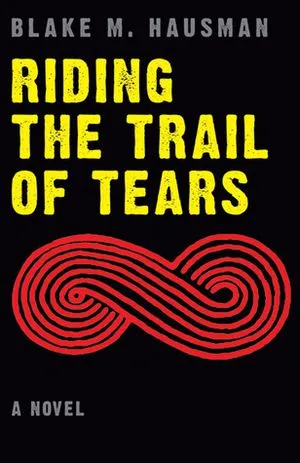
Riding the Trail of Tears by Blake M. Hausman
What truly happened on the Cherokee Trail of Tears? “And more importantly for the TREPP, how could it be transformed into a user-friendly, consumer-driven ride?” Tsalagi Removal Exodus Point Park is a virtual reality tourist trap that has a Trail of Tears “ride.” When people start losing consciousness on the ride, it looks like the story might be getting changed from the inside. It’s told from Tallulah’s point of view, a Cherokee ride operator, and it all takes place over a single day. Hausman says Riding the Trail of Tears is “to my knowledge, the first comedy about the Trail of Tears.”
Hausman is Cherokee, and his ancestors were forcibly removed on the Trail of Tears.
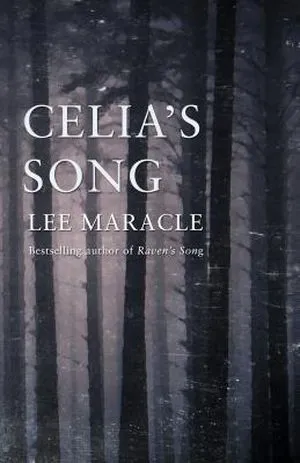
Celia’s Song by Lee Maracle
This novel follows Celia’s family over generations on Nuu’chahlnuth territory, observed by the shapeshifting Mink. By taking this long view, we see how this family deals with the long-reaching effects of colonialism, and how they try to heal. Celia is a seer, and her memories “slip and slide across the floor of her mind.” There is also a double-headed sea serpent that wreaks havoc when it falls during a storm!
Lee Maracle is a Sto:lo author.
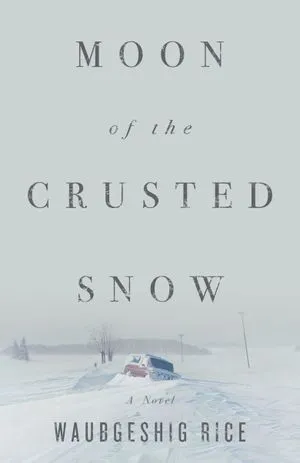
Moon of the Crusted Snow by Waubgeshig Rice
Moon of the Crusted Snow is a post-apocalyptic novel set in a small northern Anishinaabe community. When the power goes out, so do the phones and the internet, leaving this community completely isolated. This is a quiet apocalypse, as they struggle to adapt to the sudden change, especially when the food supply begins to run out and strangers start to arrive.
Waubgeshig Rice is an Anishinaabe writer, journalist, and radio host from the Wasauksing First Nation.

Son of a Trickster by Eden Robinson
Eden Robinson is best known for her novel Monkey Beach, but expect to be hearing more about this trilogy soon: it’s just been adapted into a TV series by CBC, and it will be streaming October 6. This is about Jared, a teenager who sells weed cookies and tries to take care of his family: he can’t rely on his mom or dad to keep it together. He’s understandably overwhelmed, but that doesn’t explain why he keeps blacking out…or why he can talk to crows. Also, why does his grandmother say he’s a “son of a trickster?” The blurb promises: “Everyday teen existence meets indigenous beliefs, crazy family dynamics, and a cannibalistic river otter.”
Eden Robinson is a member of the Haisla and Heiltsuk First Nations.
Science Fiction
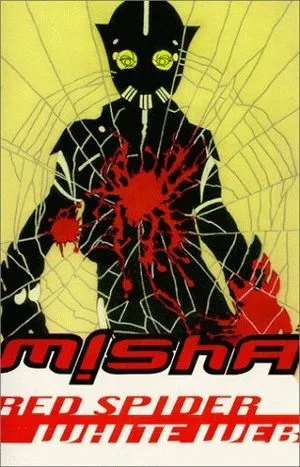
Red Spider White Web by Misha Nogha
This 1990 cyberpunk had a very different approach to the genre. Kumo is living in a dystopian and harshly divided society: the rich blithely go through the world in virtual reality helmets, cushioned from reality. The poor are literally underground, living in horrific conditions and scraping to get enough to eat. Nogha rewrites cyberpunk—a notoriously white and male genre—from an Indigenous woman’s perspective, and shows just what this genre is capable of when written from a marginalized point of view.
Misha Nogha is of mixed Nordic and Metis ancestry.
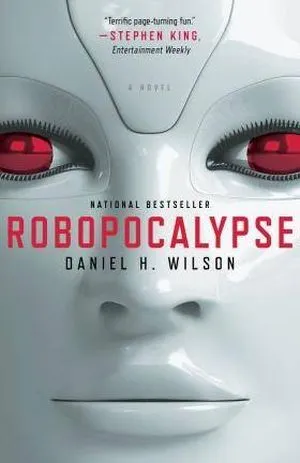
Robopocalypse by Daniel H. Wilson
As the cover and title suggest, this is about a super-intelligent AI who attempts to take over the world, using human technology against us. It’s written in present tense, from first-person accounts and camera footage. In the Osage Nation, a rebellion is launched: the lack of technology and reliance on traditional knowledge becomes the best chance humanity has to fight back. As a researcher of robotics, Wilson’s portrayal is all the more unnerving.
Daniel H. Wilson is Cherokee.
Young Adult & Children’s Books
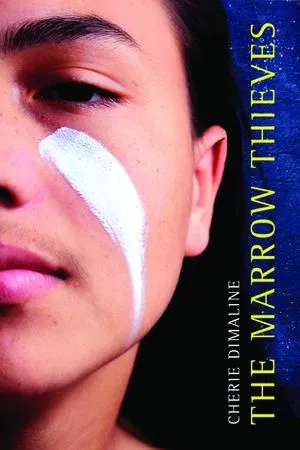
The Marrow Thieves by Cherie Dimaline
In The Marrow Thieves, global warming has resulted in catastrophic destruction, and almost every has lost the ability to dream—everyone except for Indigenous people. Now, they are being hunted down by Recruiters, who harvest their bone marrow for its dream-giving properties. Frenchie is on the run, trying to escape the fate that befell her brother, and eventually falls in with another group in the same situation. As they share stories of their lives before, the leader, Miig, unfolds the oral history of the collapse.
Cherie Dimaline is a Métis writer from the Georgian Bay Métis Nation.
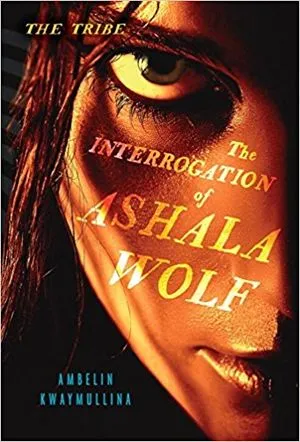
The Interrogation of Ashala Wolf by Ambelin Kwaymullina
In this post-apocalypse future of Earth, violent tectonic plate movement has resulted in a modern-day Pangea, resources are almost nonexistent, and this new land is populated by strange, threatening creatures. Ashala Wolf is an Illegal—someone with powers—who has been captured and taken to a detention center for her interrogation. They are trying to extract the secrets of the Illegals from her mind: will the Tribe survive it?
Ambelin Kwaymullina comes from the Palyku people of the Pilbara region of Western Australia.

Elatsoe by Darcie Little Badger
Here’s Darcie Little Badger again! This time with an illustrated YA novel about a “slightly stranger America.” In this world, mythology spills into reality. Elatsoe, through her Lipan Apache family’s traditions, is able to raise the ghosts of dead animals. Her cousin has also just been murdered, and she will expose the secrets of her town to find out what really happened. Elatsoe is also asexual, and this is own voices asexual representation!
Darcie Little Badger is a Lipan Apache writer.
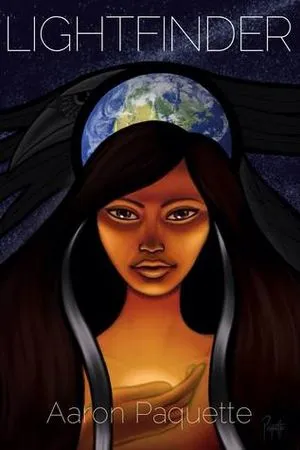
Lightfinder by Aaron Paquette
This is recommended for fans of Stranger Things! Aisling is a young Cree woman looking for her runaway brother. As she and her family try to track Eric down, Aisling begins to come to terms with her own growing powers, and the legends she has grown up with take on new meaning. Her search for Eric becomes even more urgent as she discovers that they might be players in a much larger conflict.
Aaron Paquette is Métis, of Cree, Cayuse, and Norwegian descent.

Pemmican Wars (A Girl Called Echo Vol. 1) by Katherena Vermette and Scott B. Henderson
Echo Desjardins is a 13-year-old Métis girl who finds history class becoming a lot more personal when she slips back in time mid-lecture. She finds herself on the Saskatchewan prairie, witnessing a Buffalo hunt, before abruptly being dropped back in class. As the weeks go on, Echo continues to slip back and forth through time, witnessing Indigenous history firsthand. In the subsequent volumes, Echo also visits the Red River Resistance and the Northwest Resistance lead by Louis Riel.
Katherena Vermette is a Métis writer from Treaty One territory, the heart of the Métis nation, Winnipeg, Manitoba, Canada.
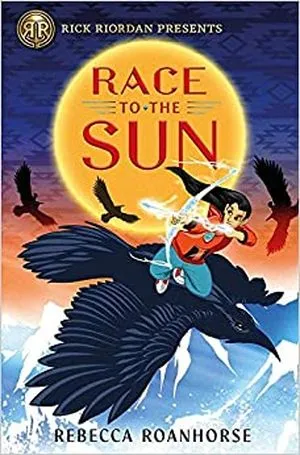
Race to the Sun by Rebecca Roanhorse
And for my final pick, a middle grade novel! As with most of the books under the Rick Riordan Presents umbrella, this is a fast-moving, action-packed book with big stakes inspired by mythology. In this case, it’s Navajo mythology. Nizhoni, her brother Mac, and her best friend Davery will have to fight ancient monsters to rescue the siblings’ father. Along the way, they have to find Diné Holy People who will help prepare them for the battle ahead, and they will endure trials to prove themselves. Also check out Roanhorse’s dystopian series, starting with Trail of Lightning!
Rebecca Roanhorse is of Ohkay Owingeh (Pueblo) and African American heritage, and her husband and daughter are Diné.
This is far from a complete list of speculative fiction by Indigenous authors! If you have a recommendation for Indigenous Futurisms books that I missed, please reach on social media! I stuck to science fiction and fantasy for this post, but for Indigenous horror, definitely check out Stephen Graham Jones’s books! Indigenous Futurisms brings a much-needed perspective to a genre that is often uncritically colonial, whether it’s fantasy rooted in Medieval England, or space travel that celebrates conquering new worlds. I hope to see even more Indigenous Futurisms books in the near future, but for now, just writing this post has definitely expanded my TBR.














